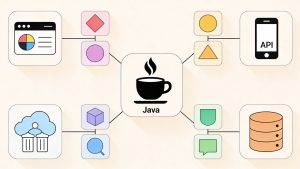A highly sophisticated malware campaign has emerged in the npm registry, targeting the authentication keys and credentials that underpin critical cloud infrastructure for enterprises. This attack spotlights significant vulnerabilities in the open-source software supply chain, where rapid development can sometimes outpace robust security governance.
Malware Campaign: Direct Targeting of Enterprise Cloud Platforms
Unlike basic threats, this campaign is engineered to systematically harvest credentials for leading cloud environments. Security researchers uncovered 10 malicious npm packages, which existing for months in the ecosystem accumulated thousands of downloads before discovery.
Once installed, a 24MB binary payload infiltrates developer systems, probing for sensitive credential files linked to AWS, Kubernetes, and Docker. By exfiltrating these files, attackers potentially gain unrestricted access to cloud services, data repositories, and production infrastructure.
The malware escalates its threat by bypassing multi-factor authentication: by stealing browser session cookies, attackers can impersonate developers and access cloud provider consoles such as AWS, Azure, and Google Cloud as well as source code platforms like GitHub and GitLab.
Further, the campaign targets API authentication by siphoning OAuth and JWT tokens critical to CI/CD and internal service communications, opening prolonged avenues for lateral movement within compromised organizations.
Advanced Evasion: How the Attack Avoids Detectio
This campaign excels in both technical and social engineering. It leverages “typosquatting”—where fake packages like dizcordjs or react-router-dom.js mimic popular modules. On installation, the attack is triggered via npm’s postinstall hook, launching stealth processes in a separate terminal window to escape immediate notice.
To further disguise malware activity, a fake CAPTCHA prompt appears to the developer, while the malware fingerprints the machine, downloads the real payload, and displays authentic-looking, reassuring messages. Four separate layers of obfuscation shield the core stealer from static analysis tools. Ultimately, a cross-platform binary harvests secrets from native credential stores across Windows, macOS, and Linux environments.
Remediation and Security Recommendations for Teams
Organizations exposed to affected packages should act immediately, treating compromised systems with utmost urgency. Mandatory actions include:
- Immediate rotation of all cloud credentials—including API keys, OAuth/JWT tokens, and SSH keys
- Complete invalidation of credentials in native system keychains and browser password managers
- Intense log auditing for connections to the attacker’s command-and-control IP and signs of lateral movement
Security teams must harden software development workflows by adopting dependency firewalls, proactive CLI scanners, and embedding threat detection within developer tools and CI/CD pipelines—not just at the network perimeter. Regular audits and swift credential revocation help limit operational impact and prevent future breaches.
Conclusion: Secure Dependency Management Is No Longer Optional
This npm malware incident underscores the urgency for developer teams to prioritize supply chain security at every phase. Dependency management must be treated as a critical security function—not just a developer convenience. By integrating advanced screening tools, monitoring systems, and security-focused development practices, enterprises can better defend against the next wave of software supply chain attacks.
Read more such articles from our Newsletter here.



